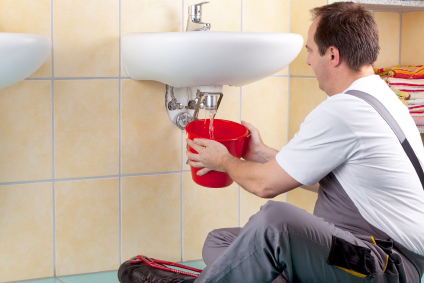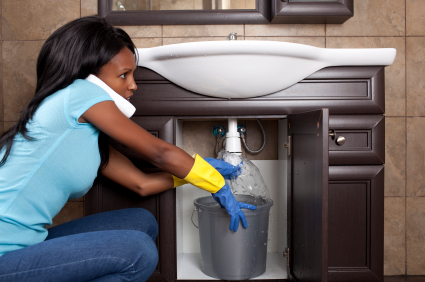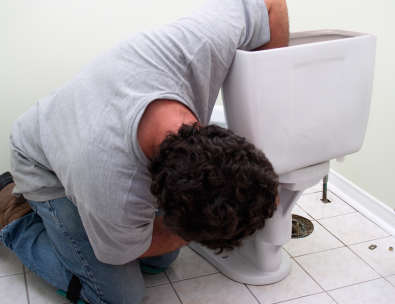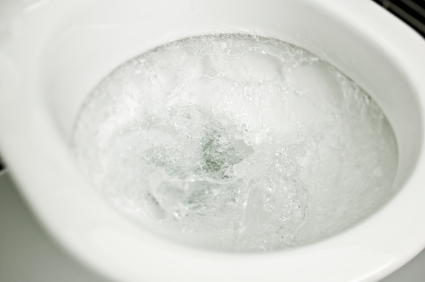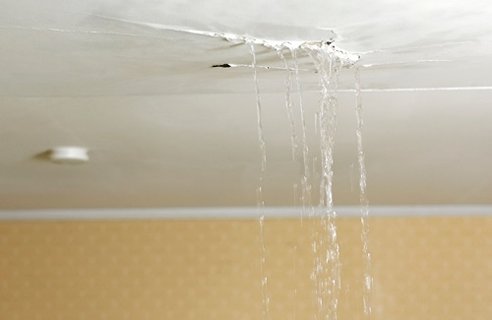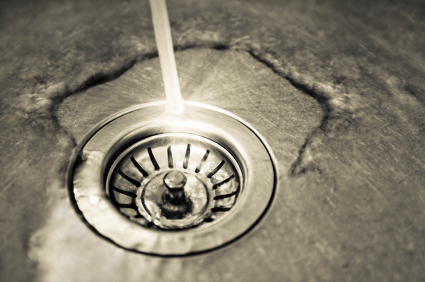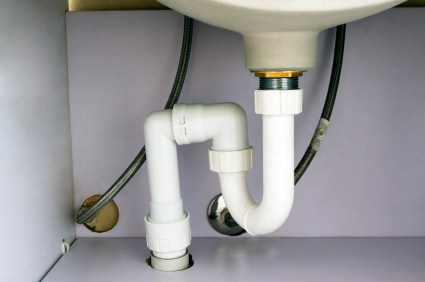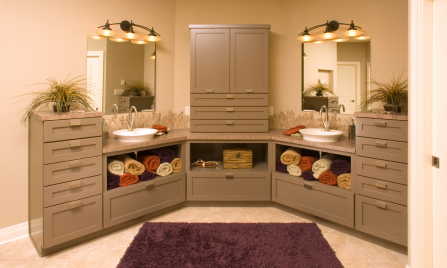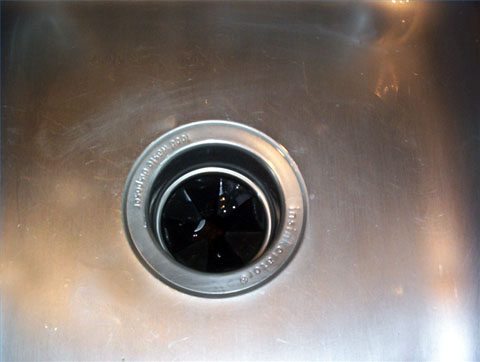The dripping of water through leaking pipes is not a sound anyone wants to hear, but with a small investment of time and basic tools, you can save money otherwise spent on a plumber. Most bathroom sink leaks are going to be caused by a bad drain pipe, loose pipe connection, or bad drain flange. Each of these problems is easily fixable.
For all leaky pipes, run the water to determine where exactly the leak is located. Now, depending on your problem, see what steps would need to be taken to fix leaking bathroom pipes.
Bad Drain Flange
1. Shut down the water in the house.
2. Loosen the slip nut that connects the sink trap to the main draine line, but not to the extent of disconnecting the sink trap.
3. Pull down on the sink trap to disconnect it and move it out of your way.
4. Unscrew the slip nut that connects the sink trap to the pipe coming out of it using channel lock pliers. If your sink drain has a stopper this will not need to be done. Instead, disconnect the stopper mechanism from the pull stem. There is a thumbscrew that connects the two. Unscrew the thumb screw to release the stopper mechanism.
5. Remove the nut connecting the sink to sink drain using a wrench.
6. Lift out the sink drain and remove any old plumber’s putty. If the flange is bent or damaged, replace it.
7. Replace the plumber’s putty by rolling up a small ball and forming a thin rope. Then set the
putty on the underside of the drain flange. Now fit back the sink drain and secure it back on
using the retaining nut.
8. Wrap plumber’s tape around any of the pipe threads.
9. Reconnect all pieces in reverse order that you disconnected it.
10. Tighten the slip nuts using channel locks.
Replacing Sink Drain Pipes
1. Shut down the water in the house.
2. Disconnect the sink trap from the wall drain pipe using channel lock pliers.
3. Remove the pipe coming from the sink drain and the drain assembly. You will be left with one disconnected piece consisting of a tail piece and a sink trap.
4. Get a new tail piece and a sink trap from a hardware store.
5. Wrap plumber’s tape around the exposed pipe threads.
6. Slide a slip nut on the unthreaded part of the tail piece.
7. Connect the tail piece the to the sink drain using a slip nut and channel lock pliers.
8. Connect the sink trap and the main drain with a slip nut.
9. Connect the sink trap to the tail piece using another slip nut.
Loose Connections
1. Tighten the sink drain flange with a wrench. Turn the retaining nut a quarter turn.
2. Tighten all of the connections between pipes under the sink using channel lock pliers.
3. Disconnect sections that will not stop leaking when tightened.
4. Clean old plumber’s tape off of threads and reapply new plumber’s tape.
5. Secure drain lines using channel lock pliers.
If none of these methods work calling a plumber may be necessary. TalkLocal can connect you to high quality plumbers in a matter of minutes.

